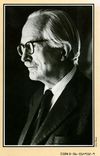Death in Captivity: Difference between revisions
imported>Hayford Peirce (fiddling) |
imported>Hayford Peirce (→Plot: finished relating the basic plot) |
||
| Line 6: | Line 6: | ||
==Plot== | ==Plot== | ||
A murder has been committed, but not in the | A murder has been committed, but not in the usual confines of an enormous country house in the English countryside so typical of the [[Golden Age of Detection]]. Instead, a Greek prisoner of war interned in a camp for British officers is found dead in an underground tunnel that a number of the officers have been tirelessly working on in secret in the hope of fleeing the camp. No one knows how the Greek could have gotten there or who could have killed him. Hoping to protect their tunneling activities, a committee of senior officers designates a scholarly fellow officer to investigate the circumstances and attempt to determine who had killed the Greek and somehow get him into their tunnel. Most of the rest of the book concerns his attempts to carry out a discreet investigation within the camp. Just as he is about to finally reveal who has committed the crime, word comes that the Italians, who have now officially left the war, are about to turn the camp over to German forces. The tunnel can just barely be completed—will they be able to evacuate the entire camp before the Germans arrive? The final chapters of the book relate the adventures of three officers as they attempt to traverse the Italian countryside and reach the safety of the Allied lines. | ||
==Reception and Appraisals== | ==Reception and Appraisals== | ||
Revision as of 15:30, 4 February 2017
Death in Captivity is a mystery novel by the British crime writer Michael Gilbert, first published in the United Kingdom in 1952 by Hodder and Stoughton and in the United States by Harper & Brothers. It was Gilbert's sixth novel and, unlike his previous ones, does not feature Chief Inspector Hazlerigg in any way. Nor is it set in Gilbert's usual locales of London, the English countryside, or France. Instead, while it has many of the elements of the classic detective story, it is also a gripping novel of mounting suspense that takes place in a 1943 prisoner of war camp for British officers in northern Italy—it was the first of Gilbert's numerous later works that would feature suspense and danger as much or more as elements of detection. Gilbert himself had been a British officer during the war, was captured, and interned in an Italian camp. He escaped and spent several months making his way through the Italian countryside trying to reach the British lines. Much of this book apparently reflects his own experiences. It was the basis of a 1959 British film, Danger Within (Breakout in the United States), that closely followed the events in the book,.
Plot
A murder has been committed, but not in the usual confines of an enormous country house in the English countryside so typical of the Golden Age of Detection. Instead, a Greek prisoner of war interned in a camp for British officers is found dead in an underground tunnel that a number of the officers have been tirelessly working on in secret in the hope of fleeing the camp. No one knows how the Greek could have gotten there or who could have killed him. Hoping to protect their tunneling activities, a committee of senior officers designates a scholarly fellow officer to investigate the circumstances and attempt to determine who had killed the Greek and somehow get him into their tunnel. Most of the rest of the book concerns his attempts to carry out a discreet investigation within the camp. Just as he is about to finally reveal who has committed the crime, word comes that the Italians, who have now officially left the war, are about to turn the camp over to German forces. The tunnel can just barely be completed—will they be able to evacuate the entire camp before the Germans arrive? The final chapters of the book relate the adventures of three officers as they attempt to traverse the Italian countryside and reach the safety of the Allied lines.
Reception and Appraisals
Anthony Boucher of the New York Times said that "the first 1952 book to reach this reviewer's desk is one which wouldn't disgrace any Best-of-the-Year list" and went on to say that it concerned:
...an important murder trial, with real understanding of courtroom psychology and technique. But the camera eye of the author constantly flashes from this... to the efforts of two likable and believable amateurs detectives who are striving to assemble last-minute evidence for the defense; and their adventures, involving maquisards and collaborators from the past, and gold-smugglers and secret agents of the present, make a thriller as wildly exciting as the courtroom scenes are suavely persuasive. It's hard to recall any technical tour de force of fusion quite so admirably integrated as this. Mr. Gilbert is one of the most accomplished leaders of the new British school of murder writing.[1]
An appraisal some years after its publication comes from Barzun and Taylor's encyclopedic Catalogue of Crime:
A superb, though harrowing, story of murder in a prisoner-of-war camp in northern Italy towards the end of the last world war. The skill with which suspense is kept up during a series of trivial incidents related to oppression and plans of escape is equaled only by the management of a large number of characters, Italian and English.[2]
Notes
- ↑ Criminals at Large, "The New York Times", 6 January 1952 at [1]
- ↑ Jacques Barzun & Wendell Hertig Taylor, A Catalogue of Crime,Harper & Row, New York, "Second Impression Corrected", 1973, page 208
